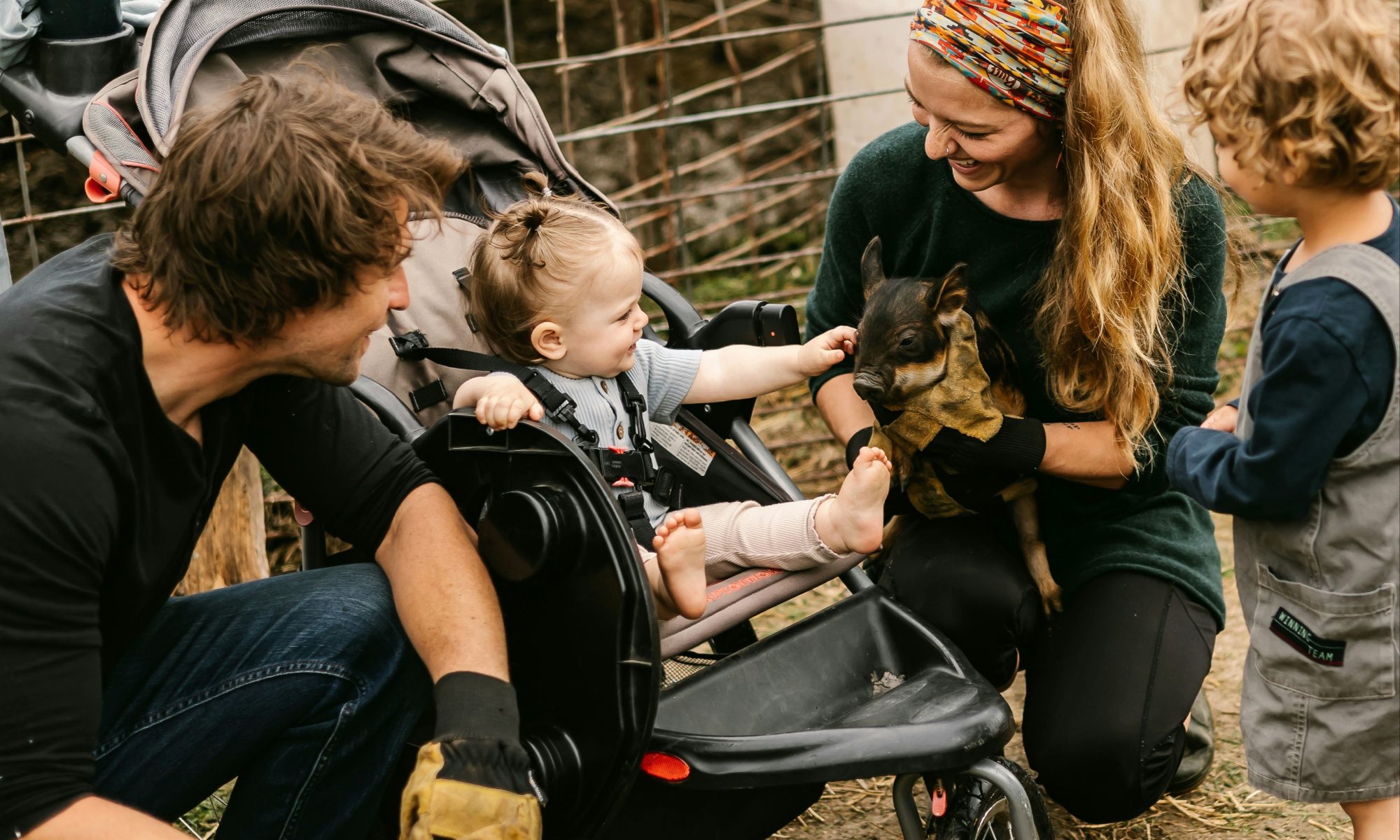I’m learning that farming or homesteading or whatever we’re doing over here in our blissful little bluff-covered corner, is often a series of “worst jobs ever”. After Michael and I relocated the pigs and newly birthed piglets, I thought, “Glad that’s done; that sucked,” after chasing down runaway piglets. It was déjà vu as I remembered saying the same thing to my sweaty self after cleaning a winter’s worth of poop and pee-laden bedding out of the goat pen. As I inhaled ammonia, broke a pitchfork, and sweat through my shirt, I thought, “This must be the worst job ever.”
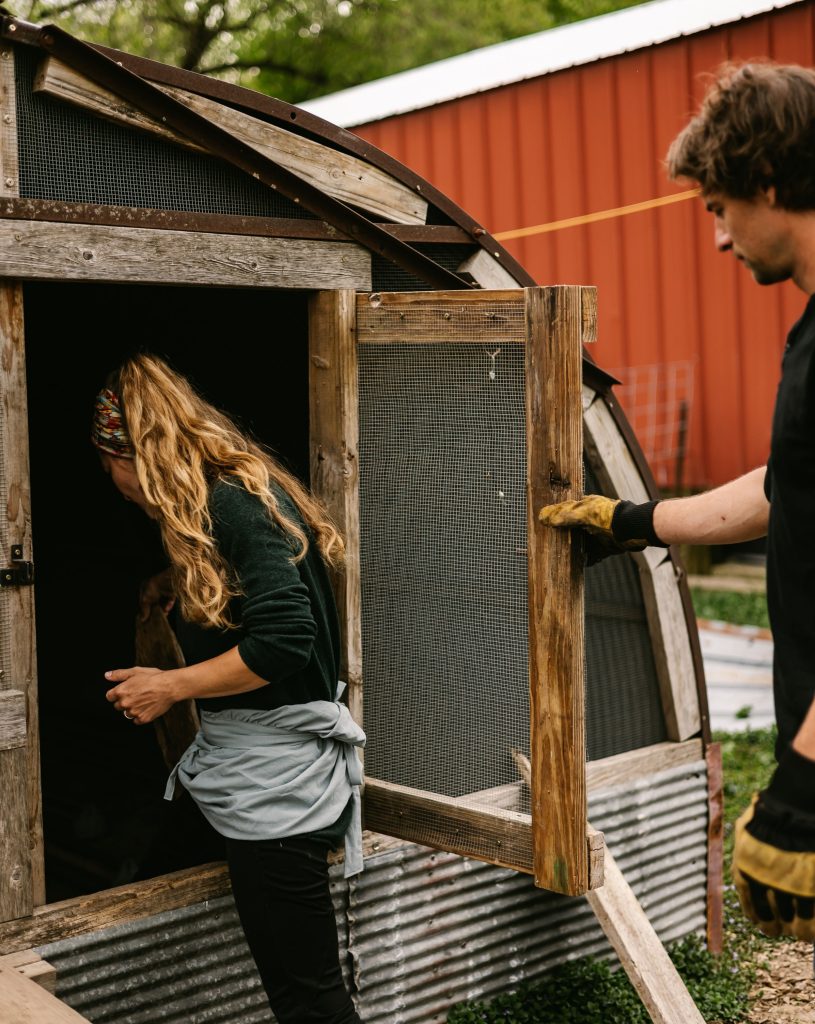
Since the pig pen relocation, I have also given the goats their CDT vaccines in their neck fat, of which there is hardly any, and held piglets upside down as the vet castrated them. Michael cleaned up dead chicken parts in the aftermath of a predator invasion. In addition to all that fun, I spend nights worrying if we’re feeding the animals enough or maybe too much or probably the entirely wrong ratio of feed and pasture. Hobby farming… what joy!
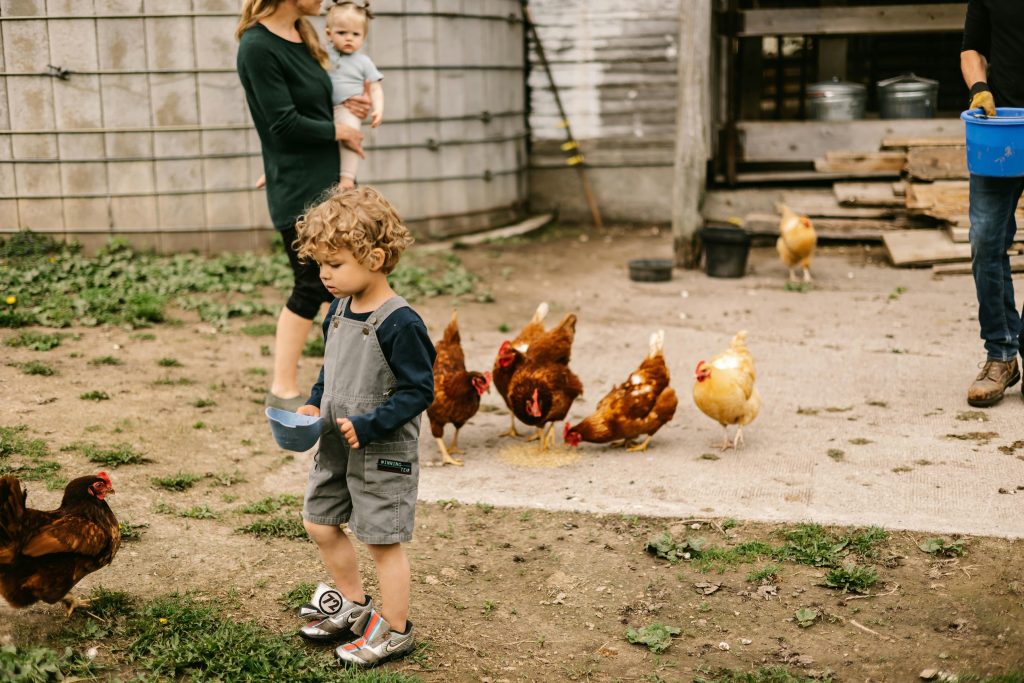
While other people scroll through funny TikToks at bedtime, I’m reading forums about the best loose mineral for goats or studying what to do when kids (goat babies) are being birthed in a bad position. The answer is that you get your hands in there and fix it. As I write this on July 10th, our arguably favorite goat, Pickles, is due to have her kid(s) tomorrow. For a generally calm person, I’m quite nervous.
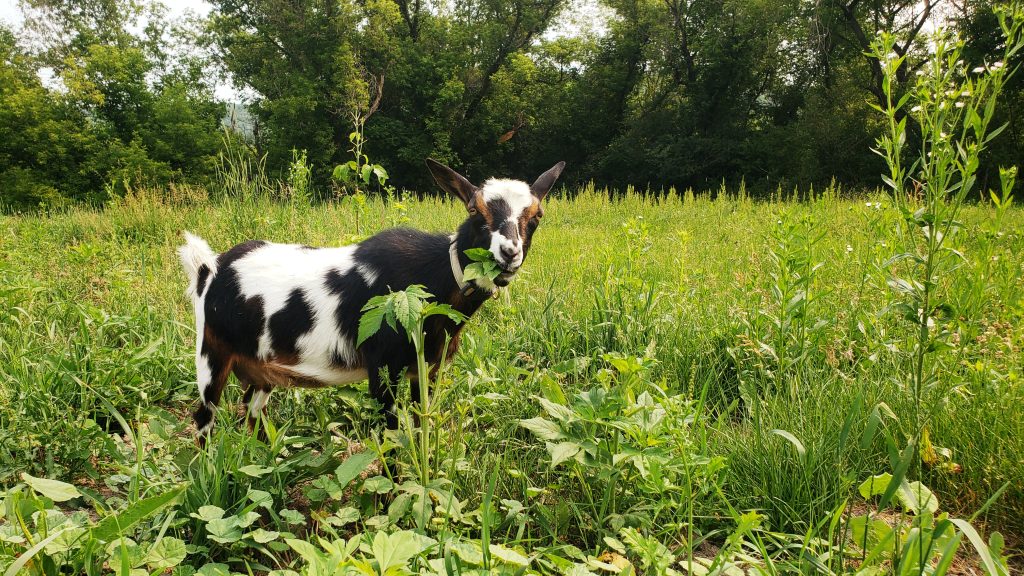
Since I didn’t intend for this blog post to be about my sweet preggo goats, I’ll move on from the idea that I may have to stick my hands in their vagina very soon. Instead, let’s talk about pigs.
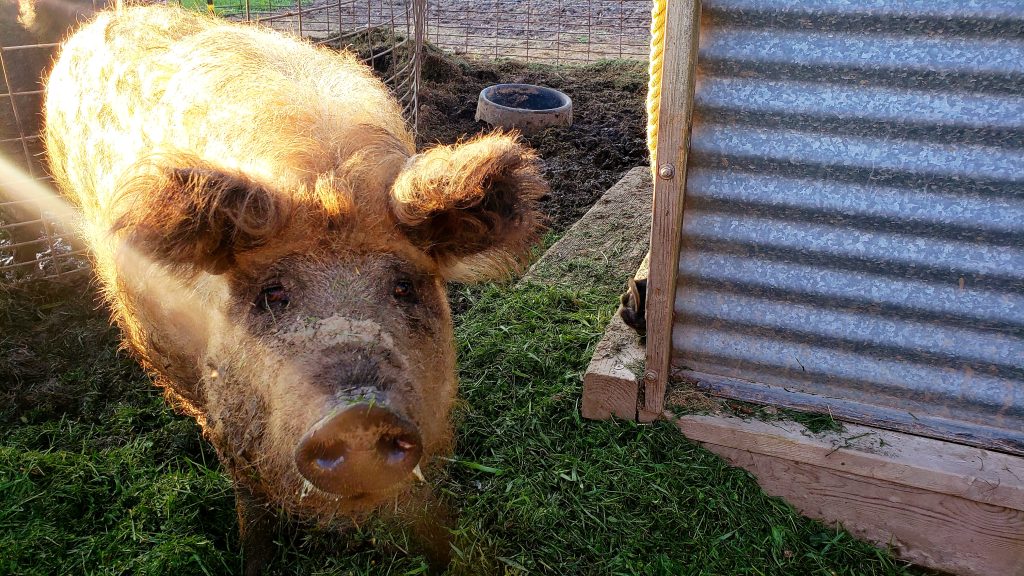
One year ago and a couple extra months, we bought three Mangalitsa pigs. It started with an old coworker of mine posting about her cute little piglets for sale. Since we had lived on water for the previous 7 years of our lives, you could say that Michael and I were eager to put this newly acquired green space to practical use.
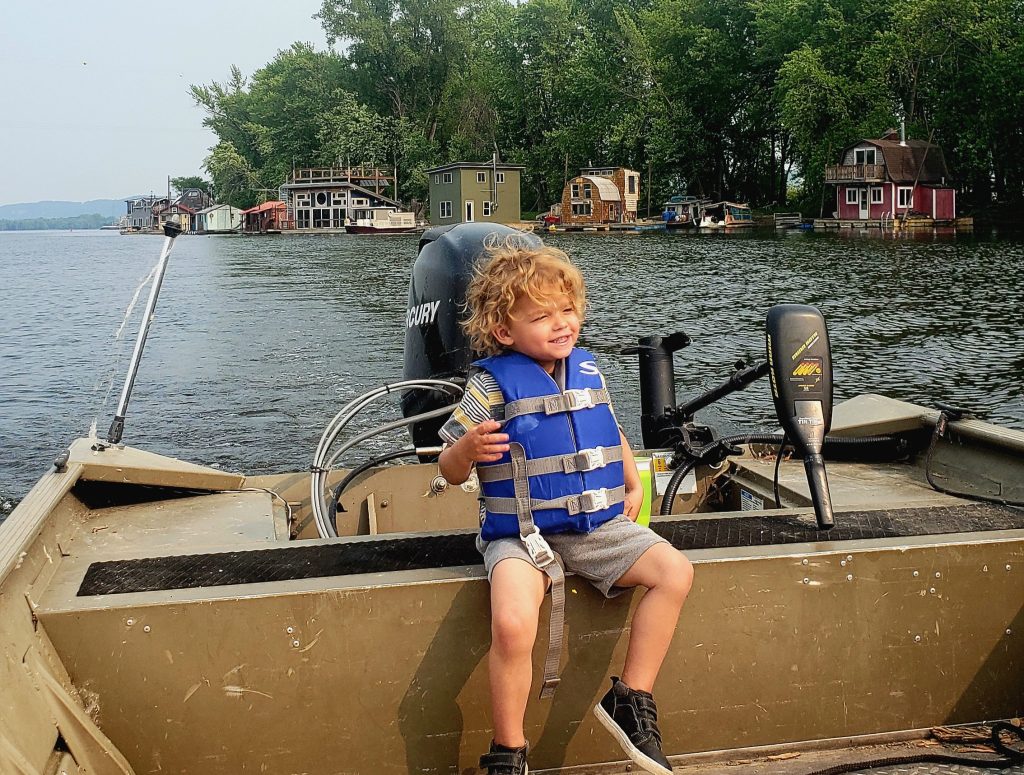
Pigs? Why not! Two males? Sure! Potential for pasture-raised pork from the only remaining wooly breed to exist, yes please!
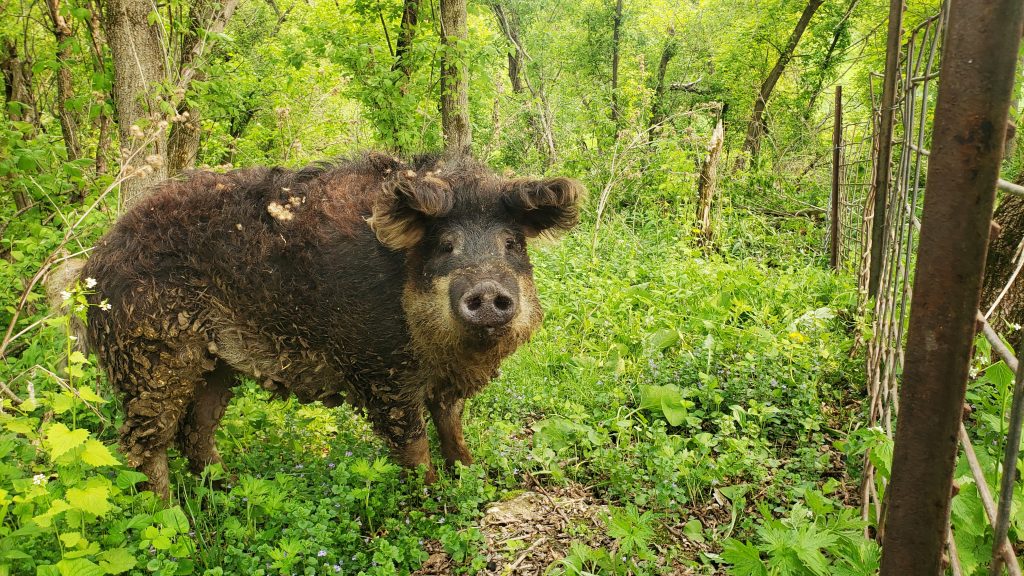
With two males (Finn and Sawyer) in the works, I perused Craigslist for an unrelated female. As always, Craigslist delivered and Rosie was acquired.
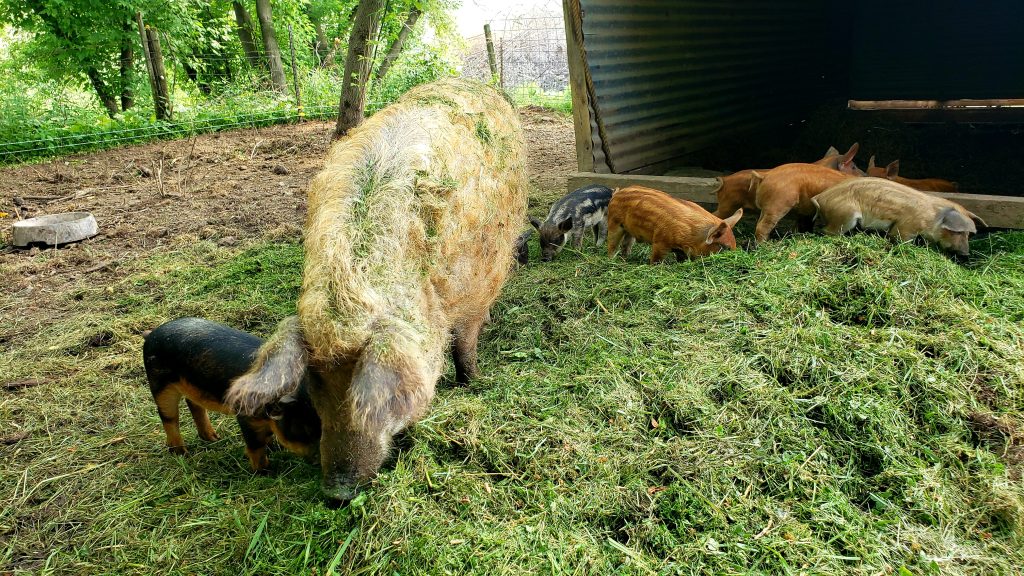
I have a major soft spot for Rosie and not just because she has the same colored hair as one of my favorite human beings- Arran Davis. Rosie is both gentle and fierce, also a bit like Arran.
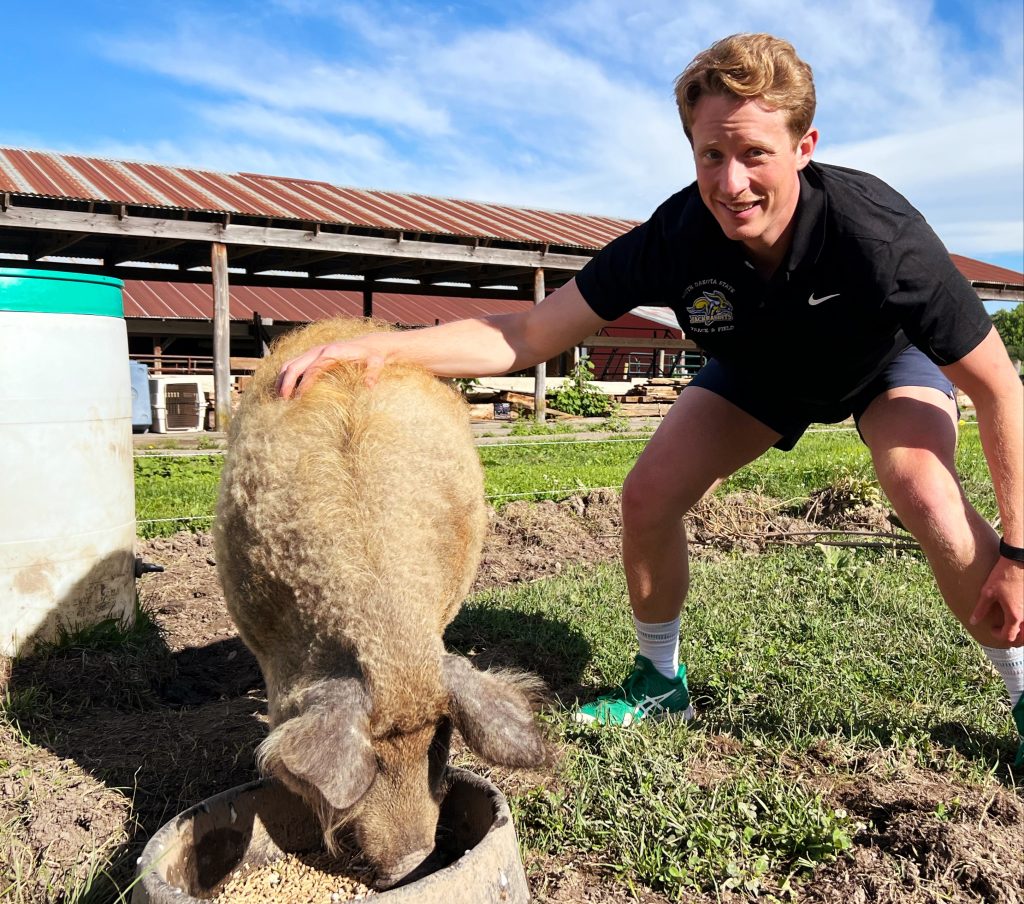
To make what could be a lengthy series of stories short- Sawyer died and Rosie nearly died once- thank goodness for Arlette and my mom who nursed her back to health while we were out of town.
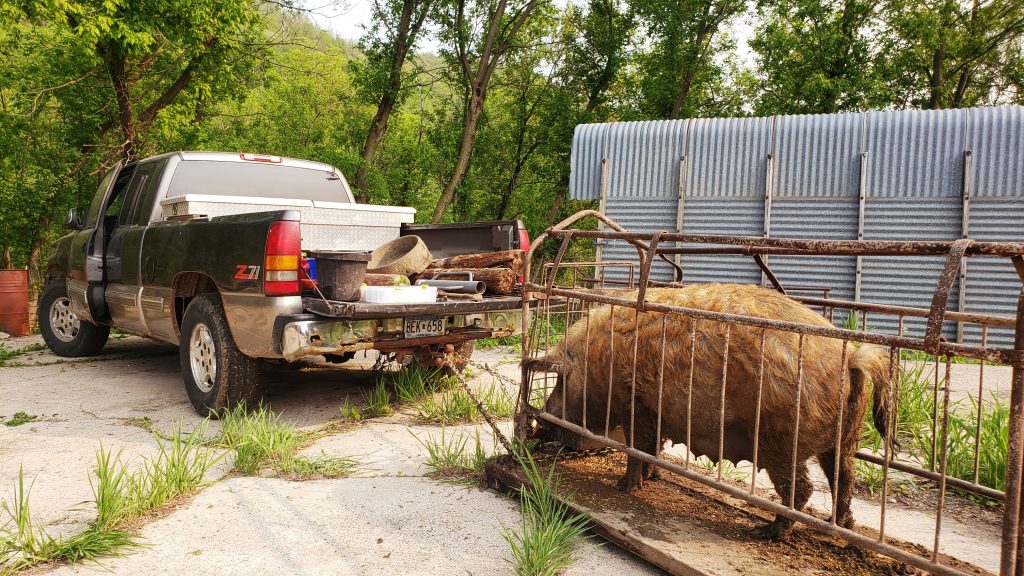
Finn, who was initially much smaller than Rosie, attempted to breed her for 6 months straight before his size allowed for success, and on May 4th of 2023, our hog herd went from two to eleven!
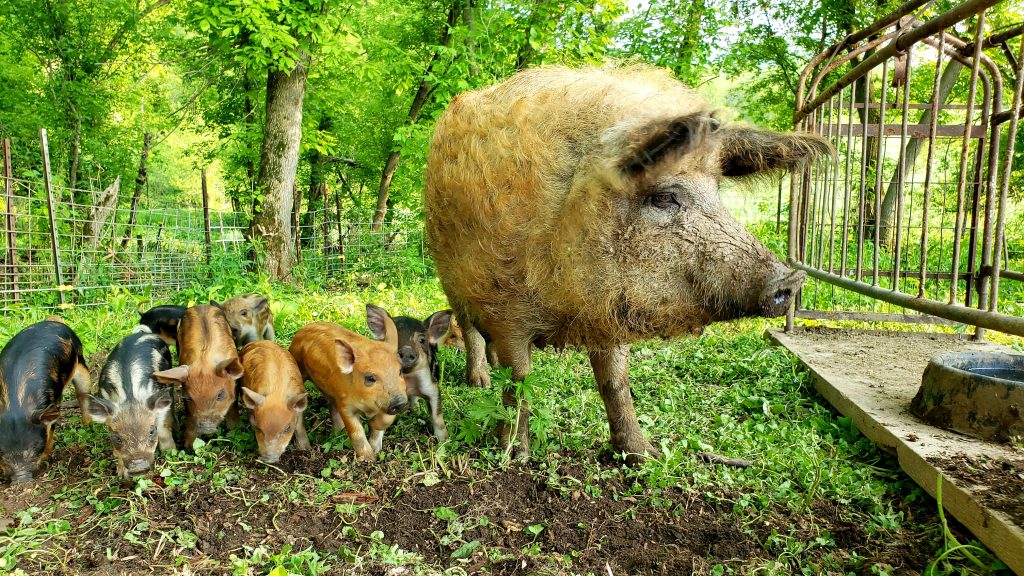
Michael and I tend to jump into things eagerly with minimal preparedness. In other words, what we lack in experience or expertise, we make up for in spirit. While Michael will binge handfuls of Youtube videos for some quick knowledge, I have subscribed to upwards of a dozen homesteading/pig/goat/gardening podcasts that keep me company to and from work.
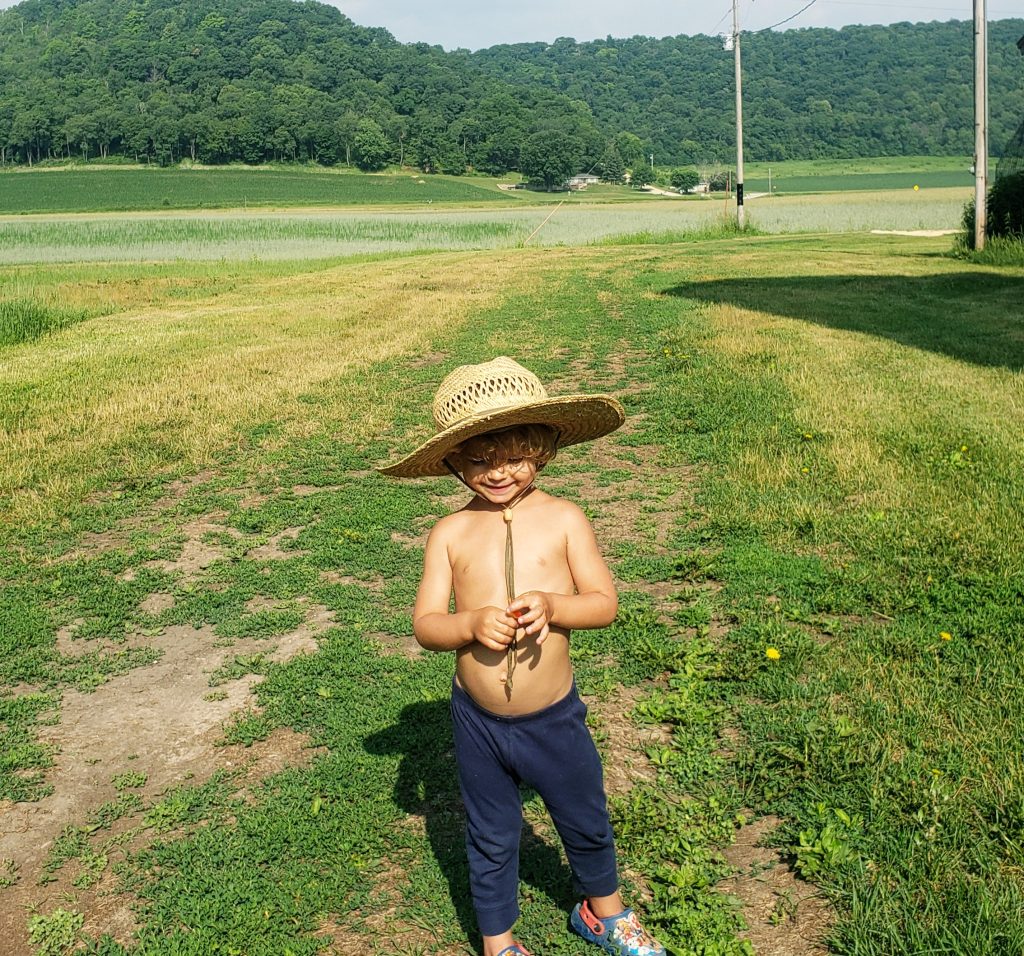
While Michael had not interacted much with oinkers before, I do have some familial background with piggies. I remember playing with Grandpa Johnson’s piglets in the hog barn here. That same barn exists today and got a new updo last summer when Michael rebuilt the fallen roof.
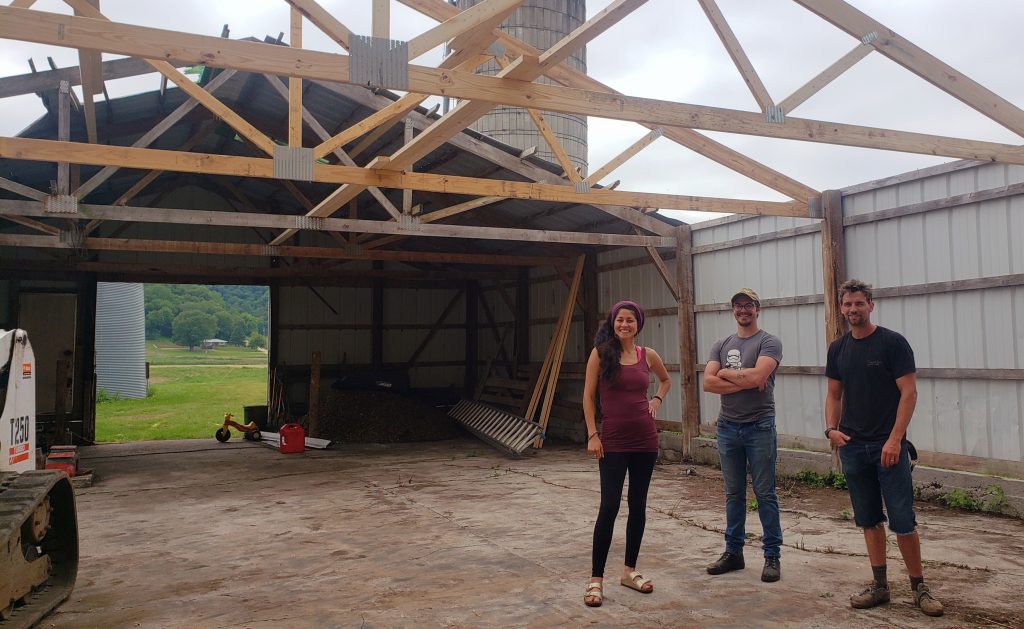
Unfortunately, Grandpa J did not include us in the pig chores as much as we were included in evenings of milking his Brown Swiss cows. I now understand why as I have seen our pigs bite through a pumpkin in one chomp and would not want the same kind of chomp delivered to a child’s arm or leg. We also keep our kids out of the pig pen. Retrieving a severed appendage would actually be the worst job ever.
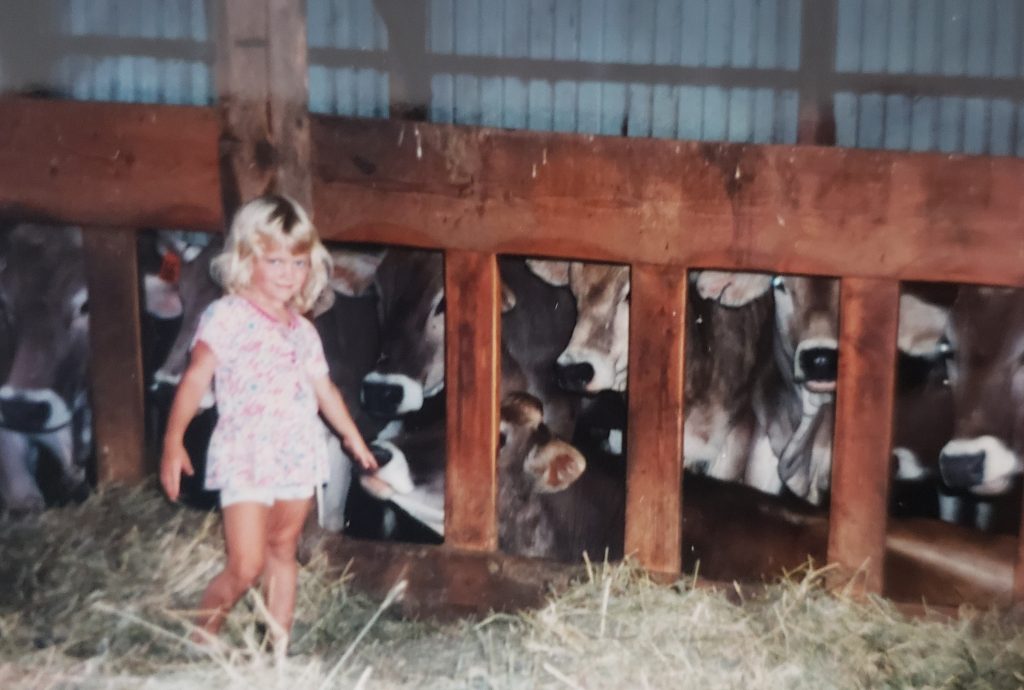
Sometime in early spring, with no background as to when consummation occurred, we decided that Rosie was definitely pregnant. As rural folk say so eloquently, she was “bagging up”. We had the hunch we should separate Rosie and Finn prior to the birth but had zero clue as to when the birth should occur.
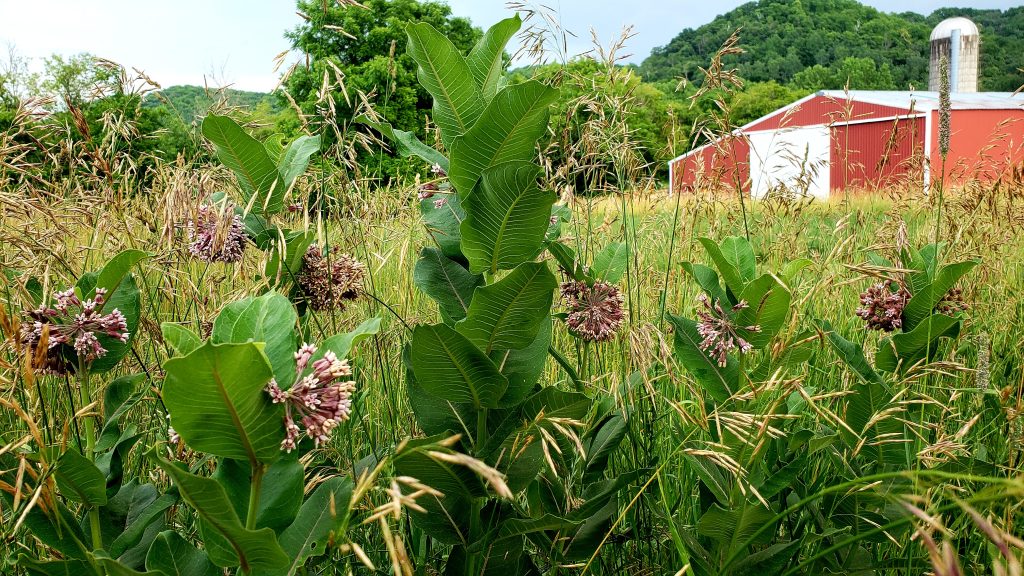
On May 1st, after a weekend of Rosie showing increased aggression towards Finn (not so casually ramming him into the side of their shelter) and being incredibly “bagged up”, we separated mama and papa.
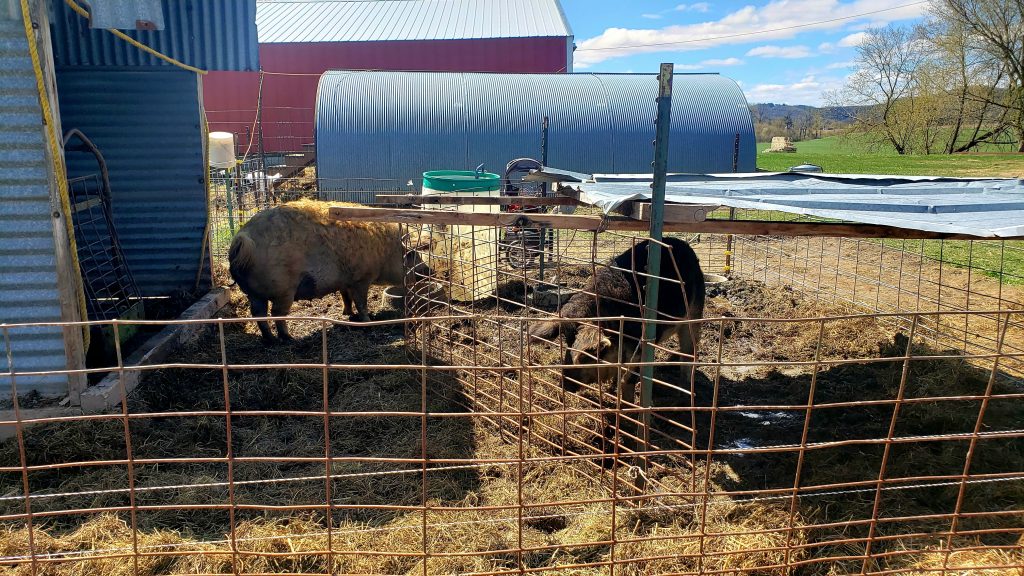
On the morning of May 4th, I went out to do the chores and came across a site that nearly brought me to tears. Mama Rosie had just finished birthing her 9th piglet. She was still laying down and panting, but she appeared calm and comfortable. The last two piglets were trying to maneuver their way to any available teat. They were tiny, squeaky and incredibly adorable.
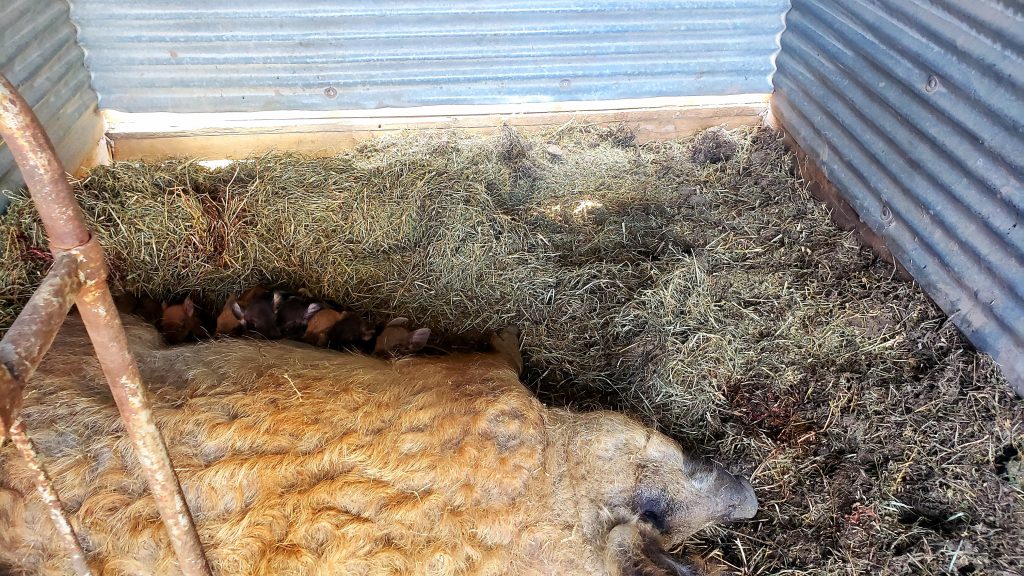
I watched the scene from afar as I had made the goal to steer clear of the natural birthing process. Mangalitsa pigs are known for being able to handle their births independently. We did not use a farrowing crate. Instead, we provided plenty of hay for Rosie to make her own nesting area. We didn’t touch the piglets for a full week. When we did, we picked them up only out of necessity and to get one good picture.
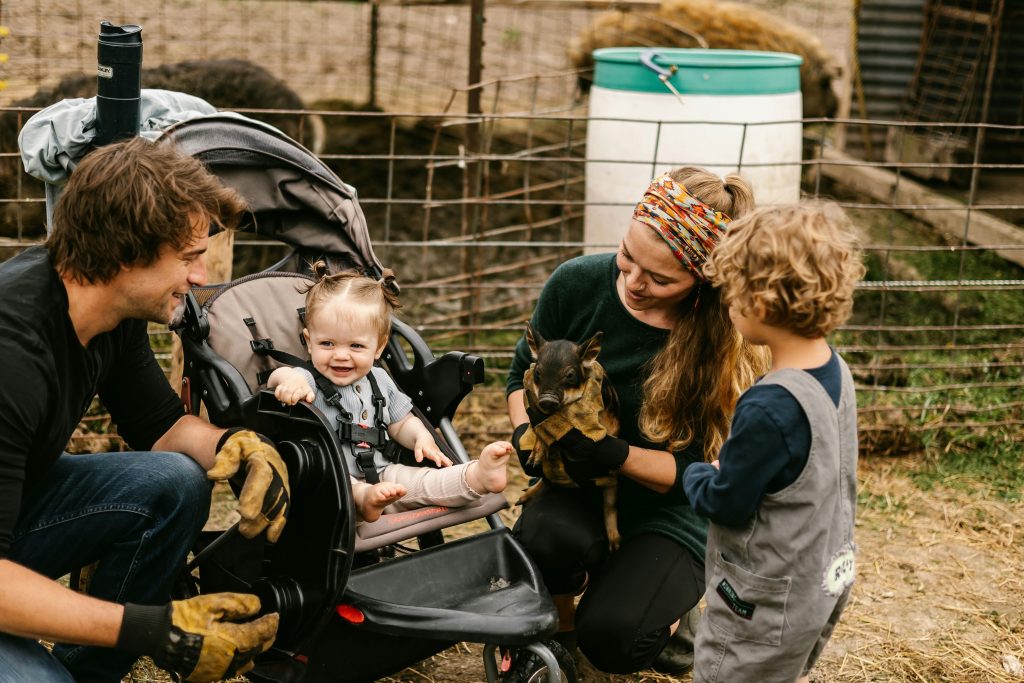
Rosie did great. She was a first time mom, and she bonded quickly and equally with all of her babies. I loved watching this and easily related to her as she grunted at them to go back in their shelter at night and as she layed down to feed them whenever they squealed at her feet.
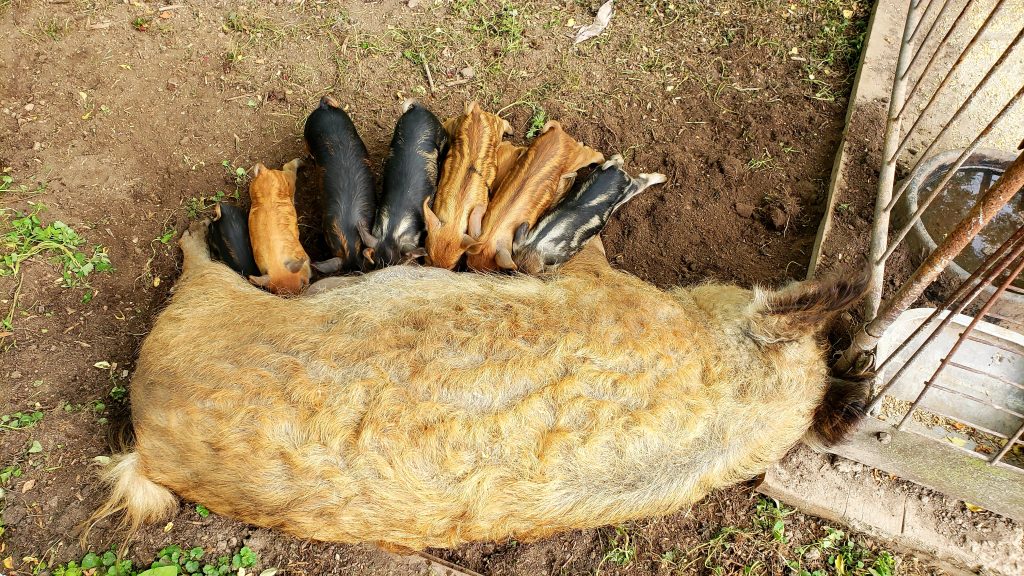
One of the sweetest things to see was when the piglets were done nursing, they would go up to Rosie’s face and rub their noses on hers as if to say “thank you mama”.
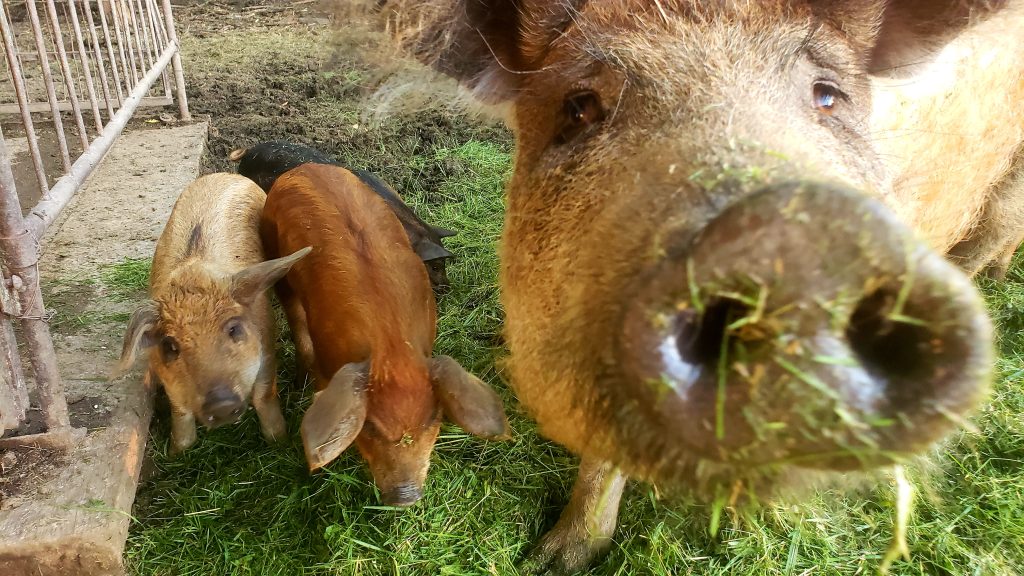
Our first farrowing experience was a success. Rosie had nine piglets and still has nine. We got four males and five females and a nice mix of ones that look like Finn and others even redder than Rosie.
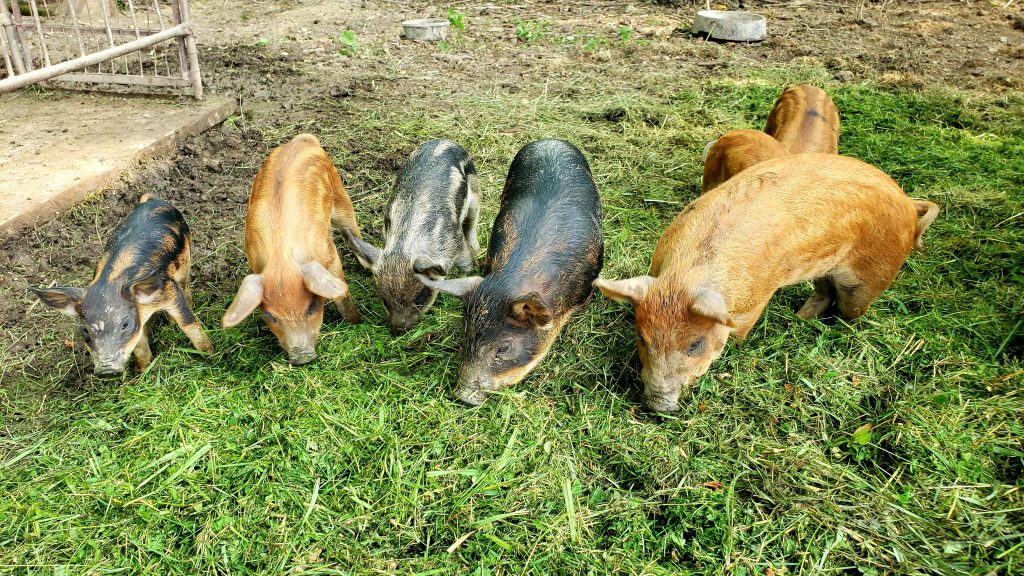
We did have one injured piglet, cause unknown. It was one of our largest males who showed back leg weakness that was worse in the evenings. He also demonstrated balance issues. It looked like an incomplete spinal cord injury. He ate and drank well; time was all he needed. After a month, he appeared fully healed.
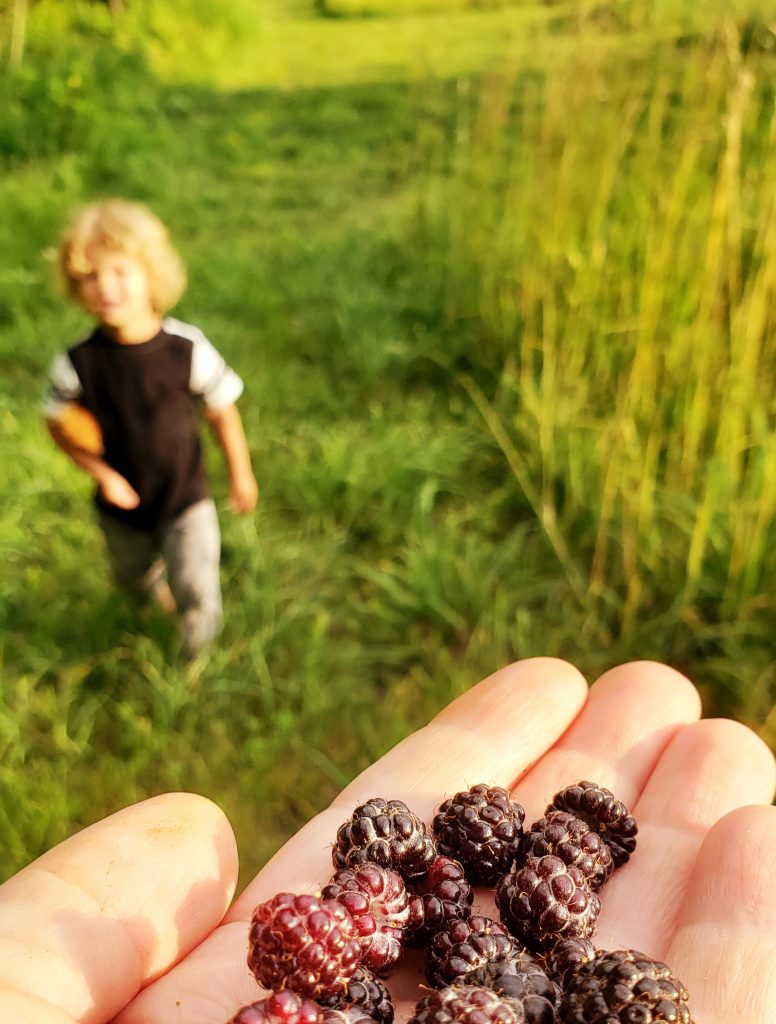
The next looming “worst job ever” was castration. Should we or shouldn’t we? If we did, should we do it ourselves, include a vet, or recruit someone wiser than us? My mom and aunt were able to recount what Grandpa J and Uncle Ray did. Michael’s dad had another rendition. It seemed that the holding of the pig was the biggest variable with the rest of it being consistently dreadful- cut a hole, grab the testicle, yank, repeat. The holding part varied from draping over a fence, cradling on the farmer’s lap, or positioned in a five gallon pail.
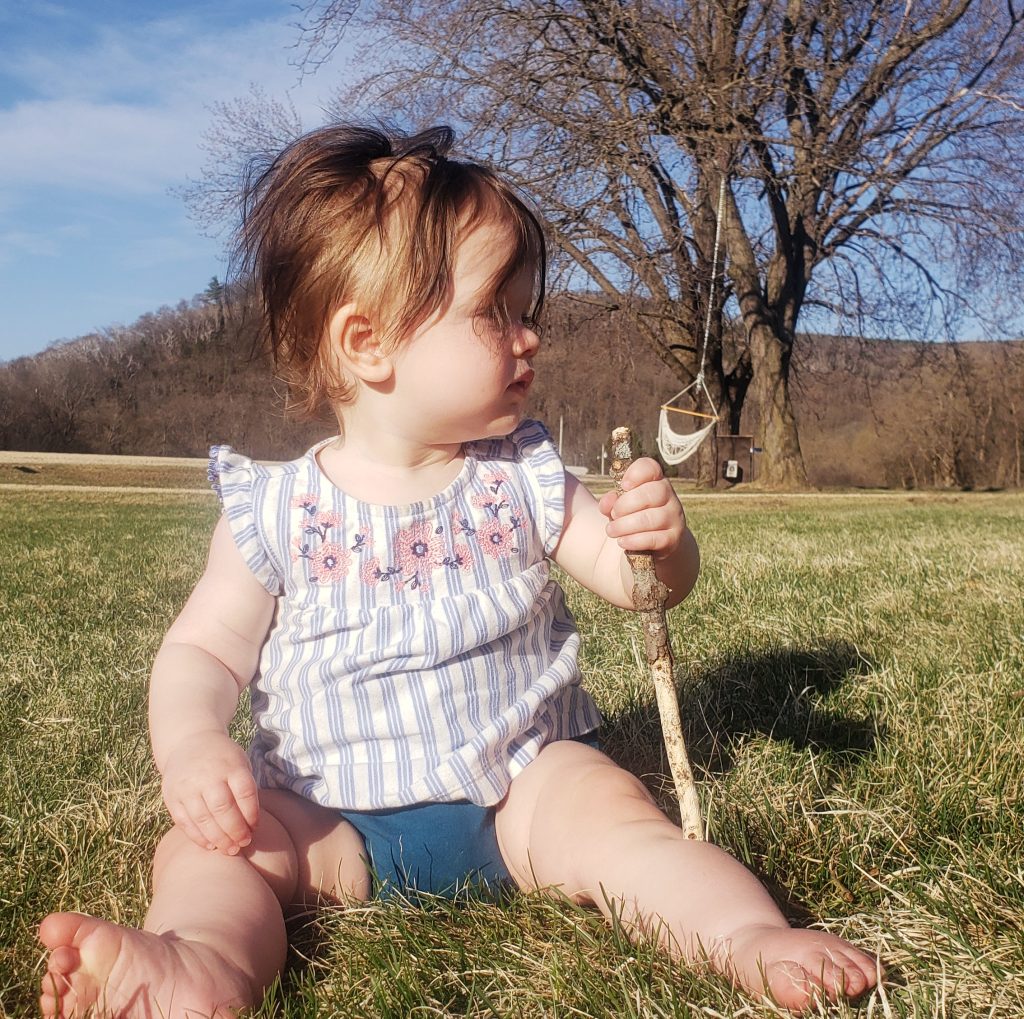
As a nurse who’s grossed out by nothing, I knew I could handle the gory details of the job. But, as a nurse who appreciates evidence-based practice and proper training, I called the veterinarian.
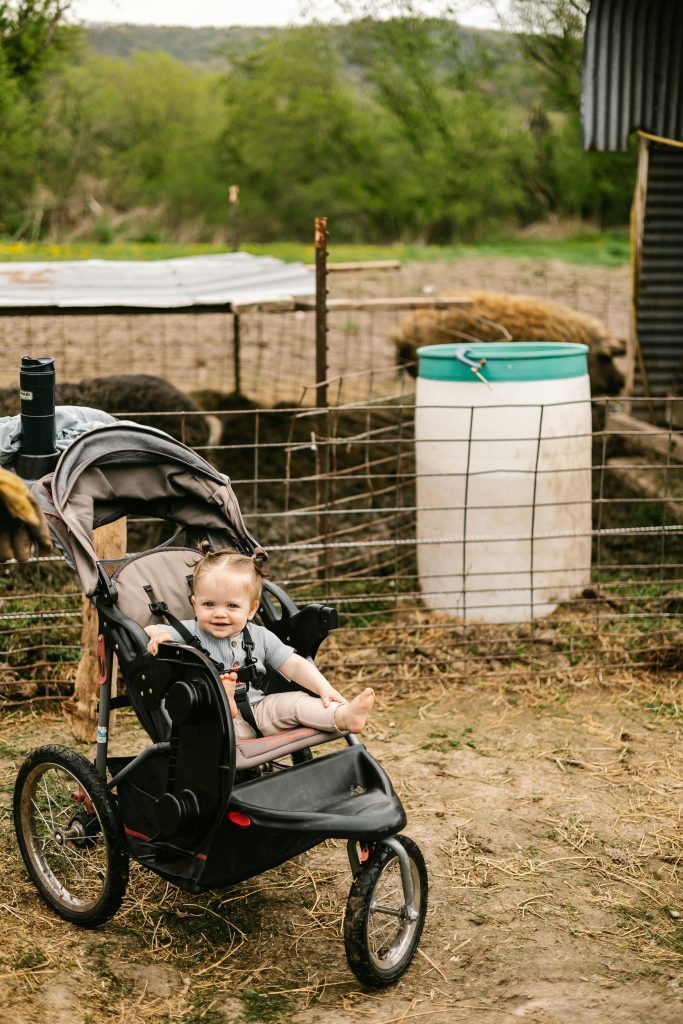
The animal doctors were great. Shout out to Karen and Aliyyah. We were happy to have them here. We were hoping to establish ourselves as patients should we need an emergency visit during off hours or prescribed medications. As of June 11, there was also a change by the FDA that all animal antibiotics will need to be prescribed rather than available over the counter. I’m sure this is controversial in some spheres as it creates another step for farmers who are already doing so much, but it makes sense to me. Overuse and misuse of antibiotics have been prevalent in the human medical field as well and this has led to antibiotic resistance and hard or impossible to treat bacterial illness. I’m sure the same problem is happening in veterinary medicine.
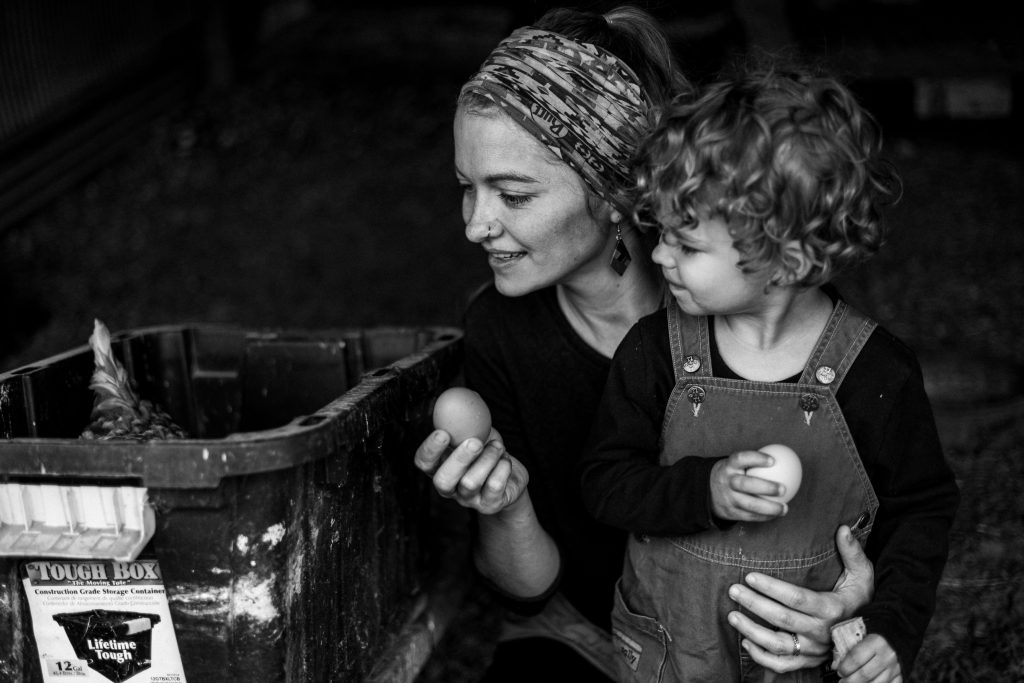
Back to the testicle tugging. It was almost as displeasing as the stories told. Michael and I did the holding while the docs did the cutting. We held them upside down, sanitized their region, and used a razor to cut a slit. The testicle was found and pulled.
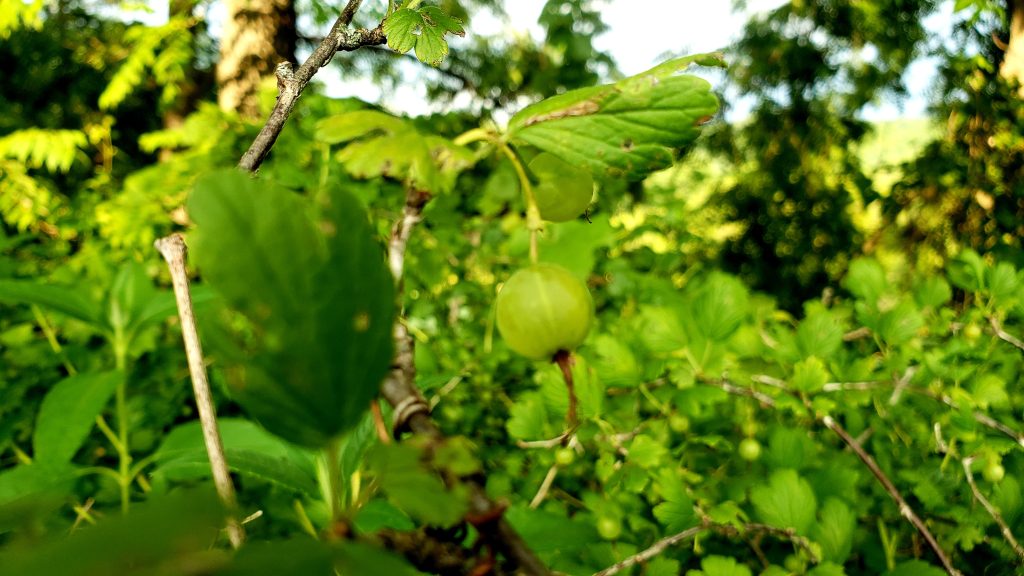
If you came to this blog for tips and tricks on castration, look no further (or if you’re wise, you might want to). We learned not castrate on a very hot day. The additional stress could be detrimental.
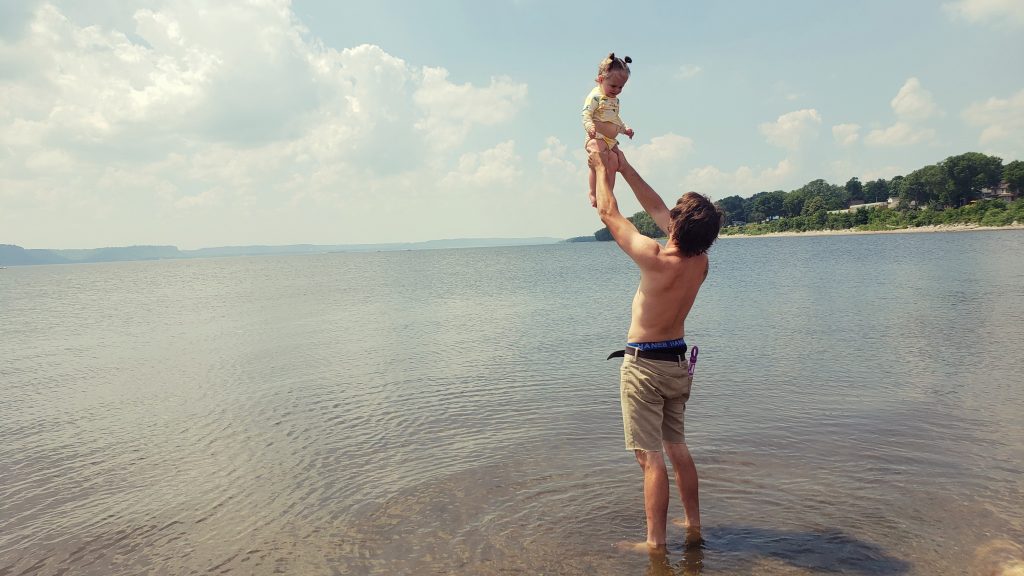
It is definitely a two or three person job. One person holds the pig upside down by the legs. Another person can hold the head and front legs more comfortably. The lucky third person cuts and pulls. If you have a friend who agrees to help you with this event, keep them forever; that person is a treasure because once again, it is a “worst job ever” kind of thing.
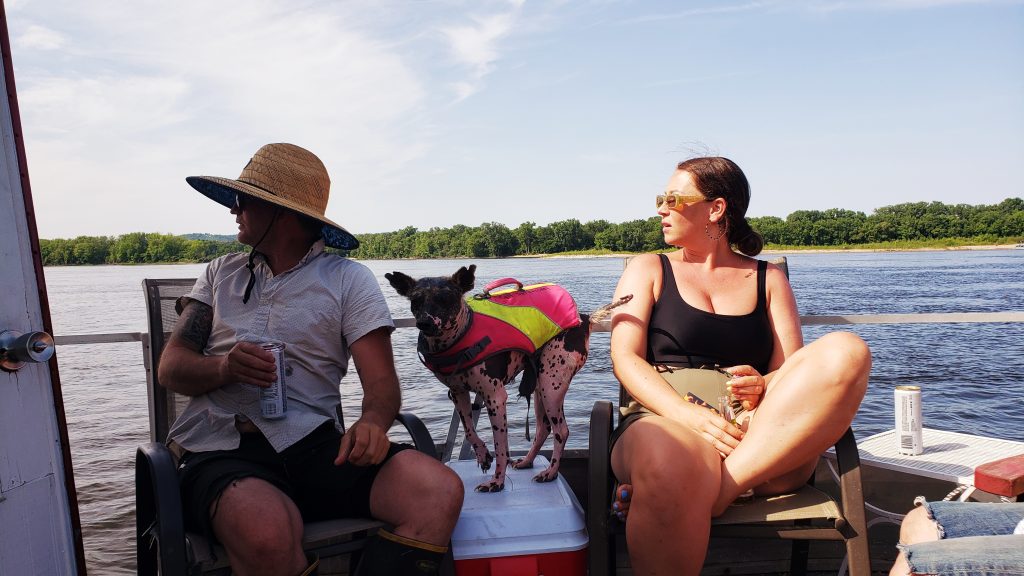
Another tidbit, castrate early. It’s easier, and they heal faster. With hot spells and scheduling conflicts delaying our appointment, we did not castrate until the piglets were 7 weeks old. Within 8 weeks is okay, within two weeks is best.
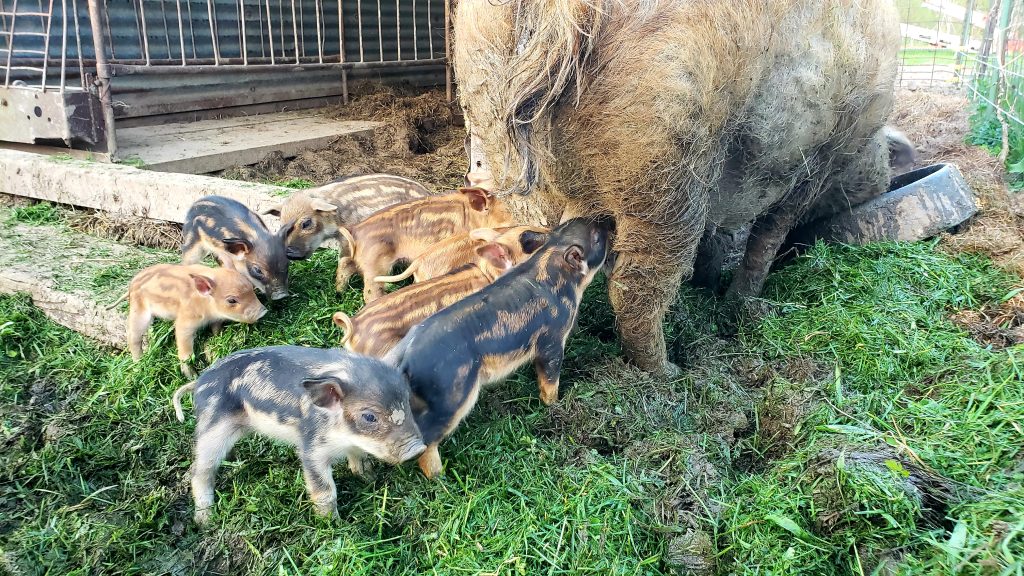
Lastly, it wasn’t quite as intense as I had expected. The piglets were immediately moving around like normal, and they healed quickly. The long-lasting benefit is that they can now live together in harmony for the remainder of their lives.
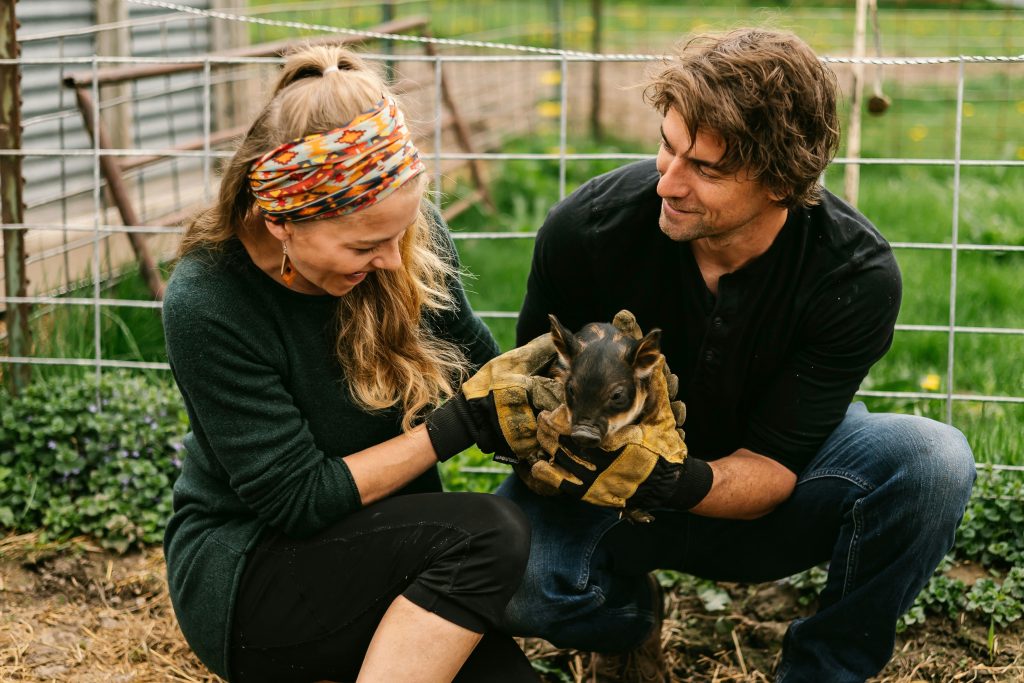
I finally understand the cliché of eating like pigs. Pigs really do eat. We feed ours grass clippings, weeds, garden waste, food scraps, and finally- dealer’s choice of a corn, oats, and sunflower seeds. This year, thanks to my dad’s help, we planted a field of oats that we plan to turn to hay for winter feed.
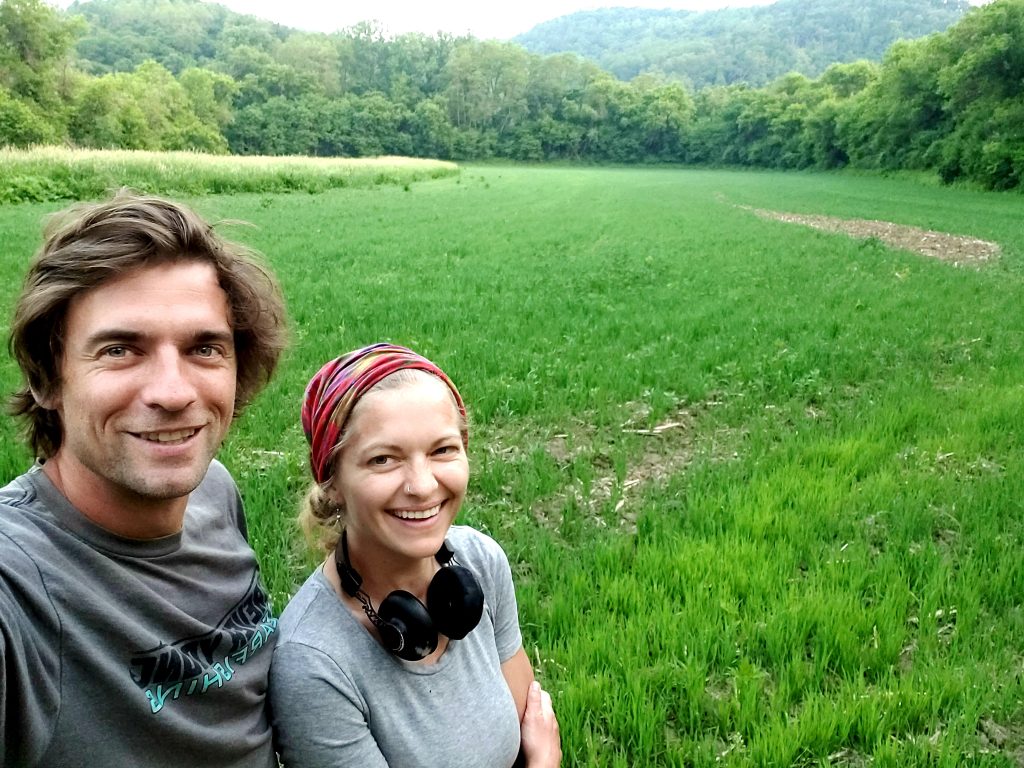
While pigs are generally raised for pork, we have found a few bonus benefits. After throwing them scraps of squash, pumpkins, and gourds last fall, we now have a magnificent surprise garden of the aforementioned produce.
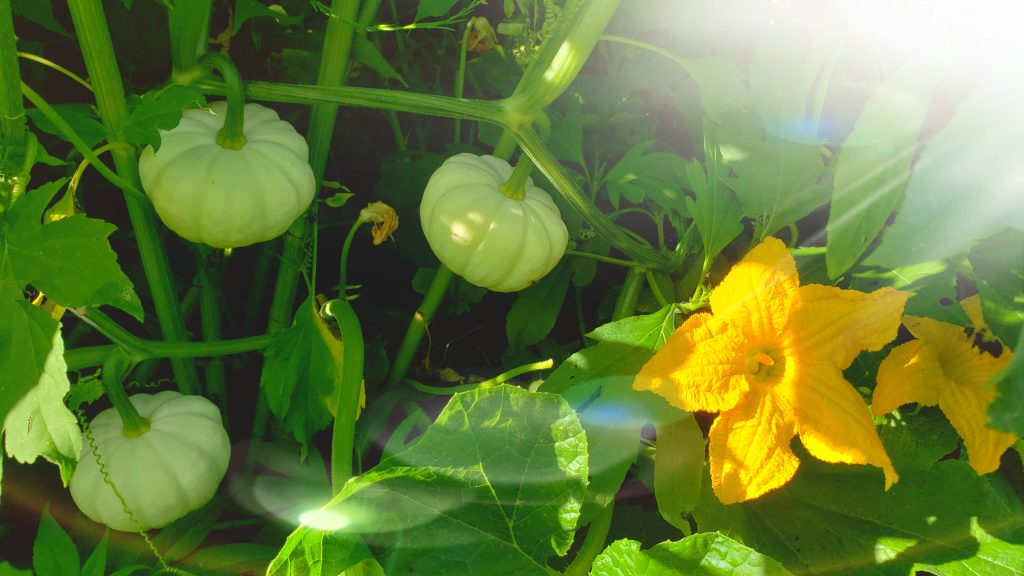
I’m not sure if the seeds made a trip through the pig and out their rear ends or if they settled in directly from the produce, but they have certainly established themselves! I’m sure the soil was very fertile from all the excrement.
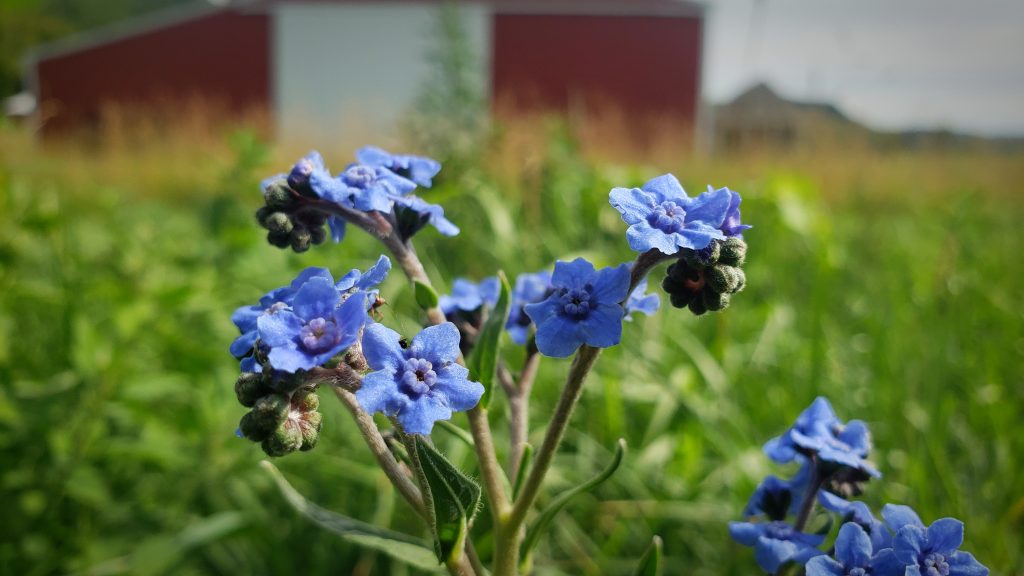
I would like to utilize the pigs as tillers this fall by putting them in the space that we use for a garden next spring. Not only would this enrich the soil with some good old manure fertilizer, but pigs are experts at rooting up all the weeds. We have seen how quickly they can create a blank space of rich soil.
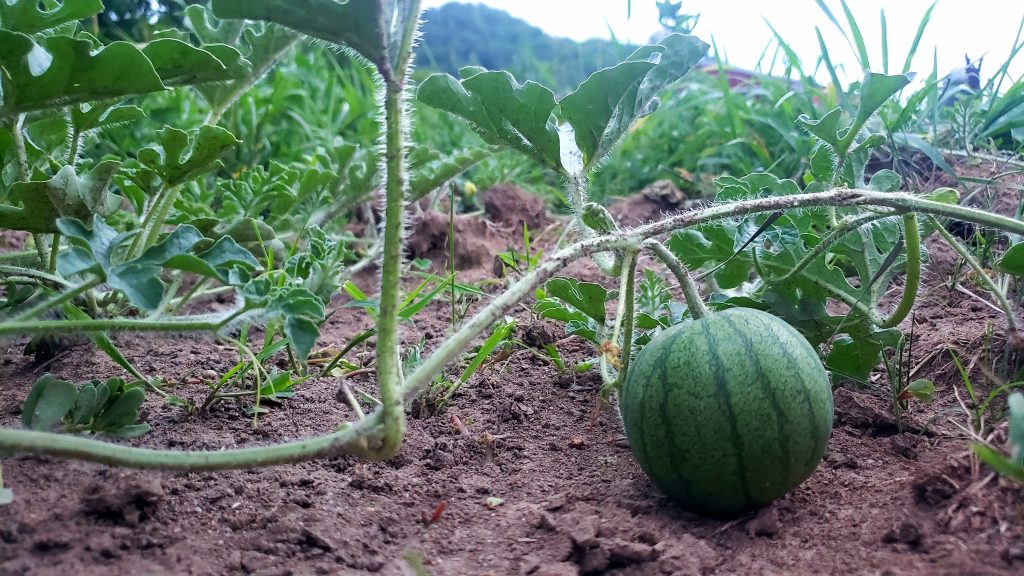
Another unexpected benefit of our pigs was predator prevention. Before moving the pigs early this summer, we had them next to the goats and chickens. The chickens free-ranged without consequence; the goats too.
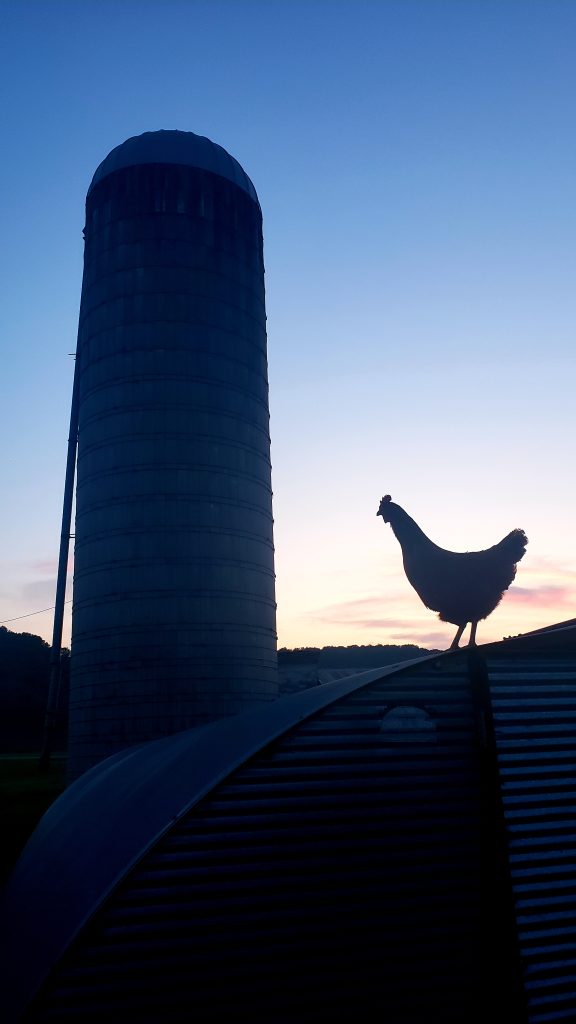
This summer, after moving the pigs to their own area, we went from 15 chickens to just three.
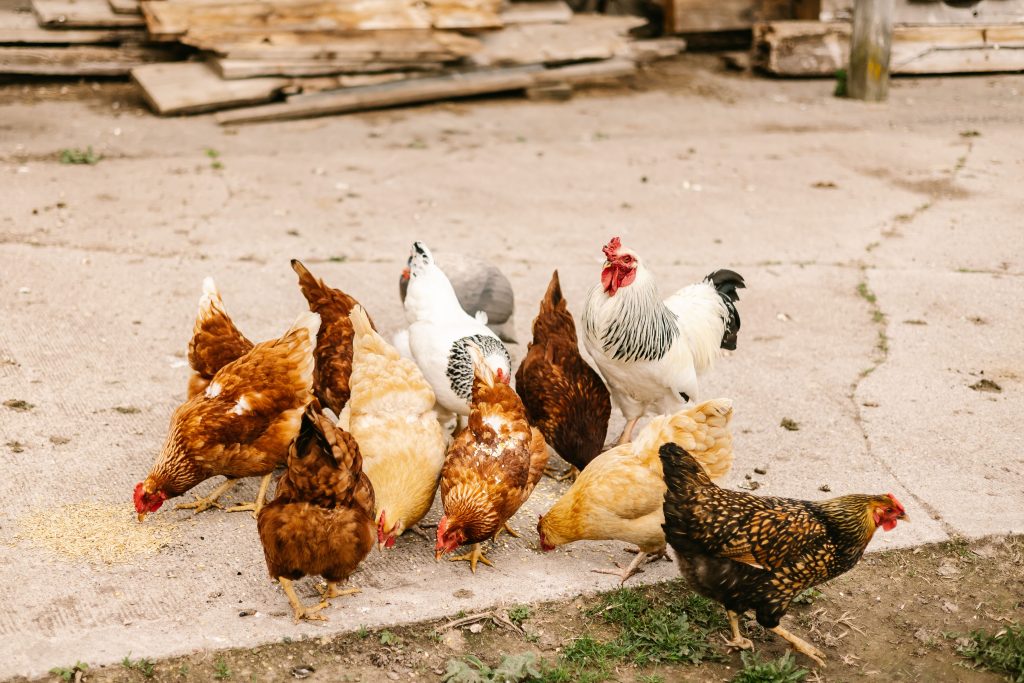
I can’t help but believe our big wooly grunting beasts were a reliable deterrent to the raccoons and minks of our world. In their absence, our live trap has been busy. Deciding what to do with a returning predator… another worst job ever.
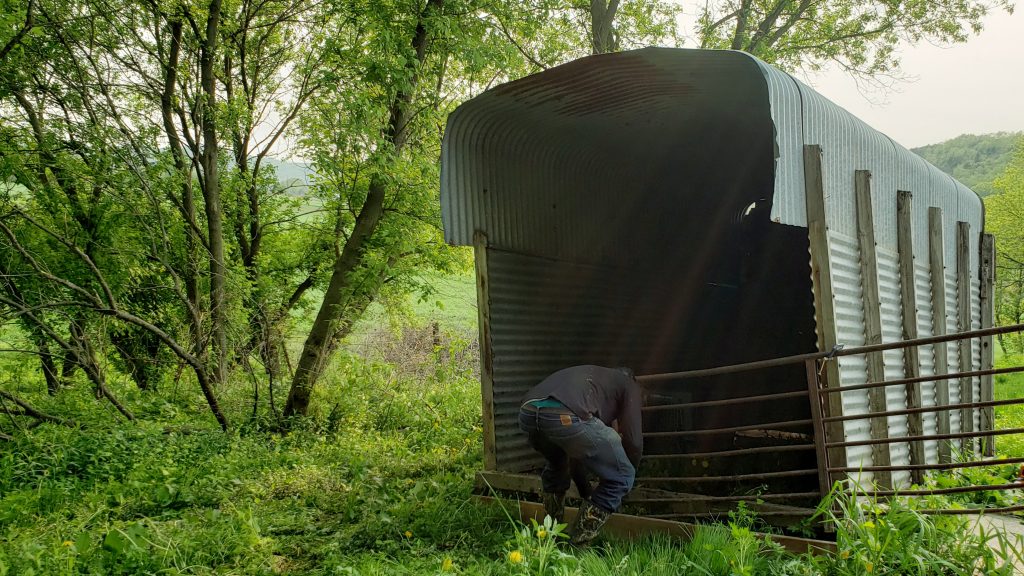
I’m being dramatic with the “worst job ever” complaints. The worst jobs ever are always done in balance with all the beautiful/wonderful/pinch me parts. It’s a little like everything else- eating a salad with a brownie for dessert or giving birth to then holding the little person of your dreams.
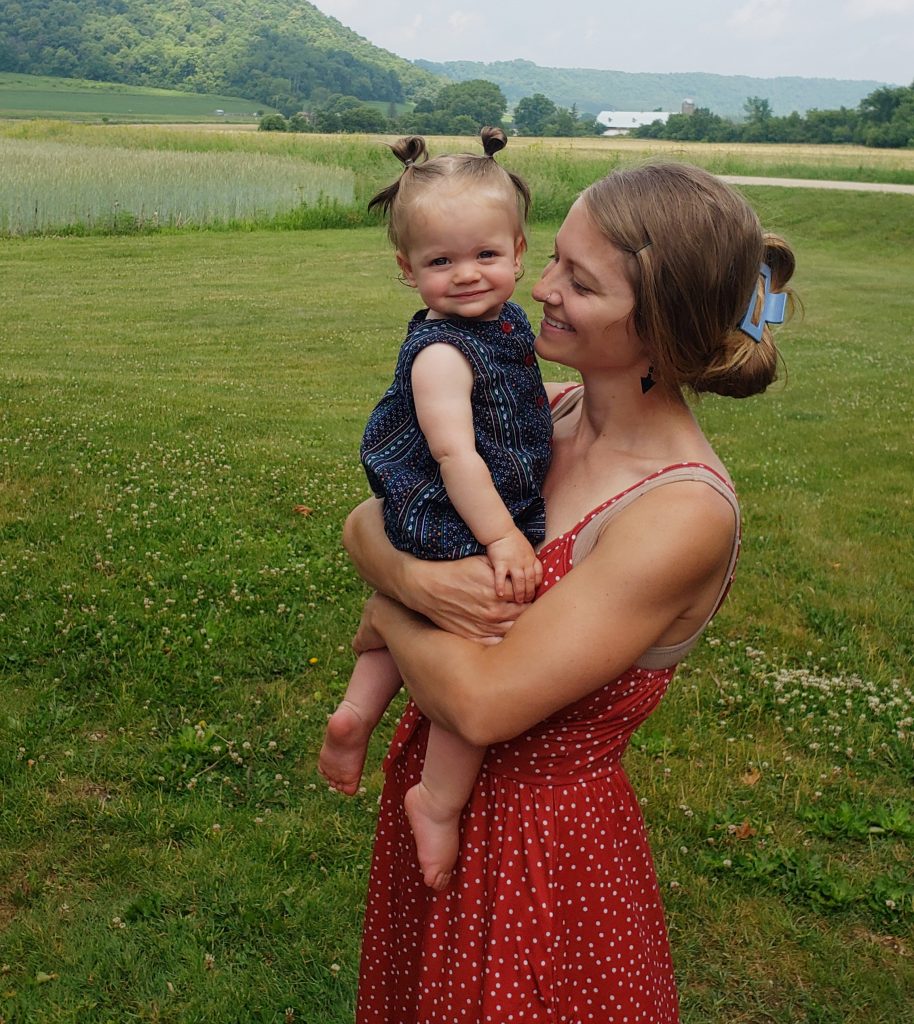
My job as a nurse knows this well- some days really break your heart and others are all the more life-giving because of those worst days. When it’s all thrown into the big bucket of life, it might be filled with a lot of shit, but it’s going to be growing the best damn surprise squash garden you never expected.
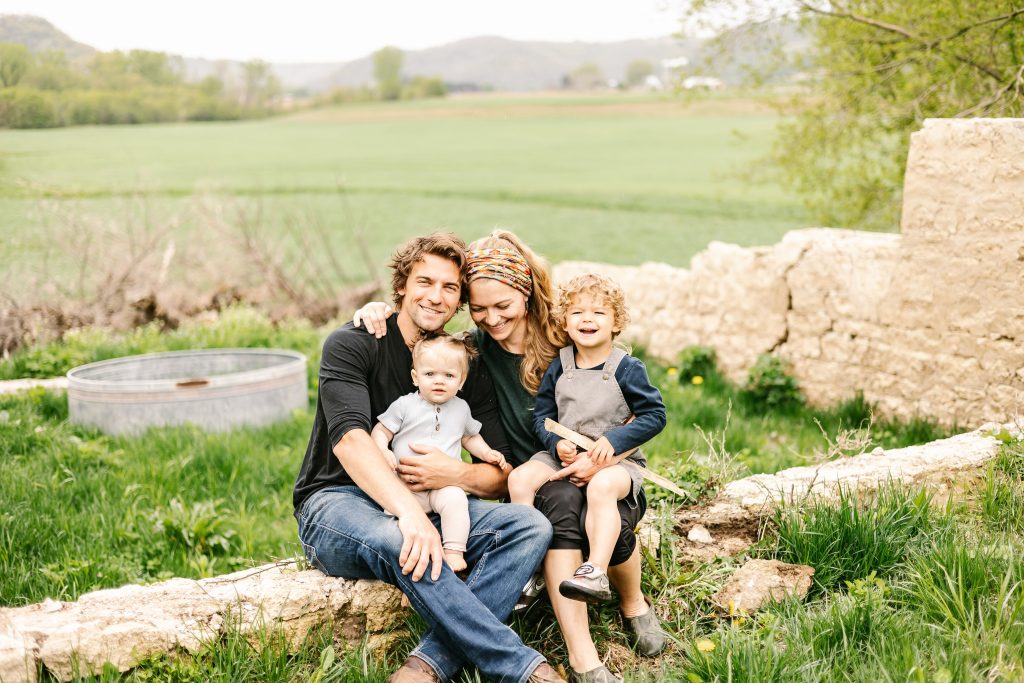
* pictures (in order from top to bottom) 1, 2, 17, 23, 24, 29, 35, 38, and the cover photo were taken by Brooke Rihn Photography, you can find her on IG or Facebook by the same name 🙂
